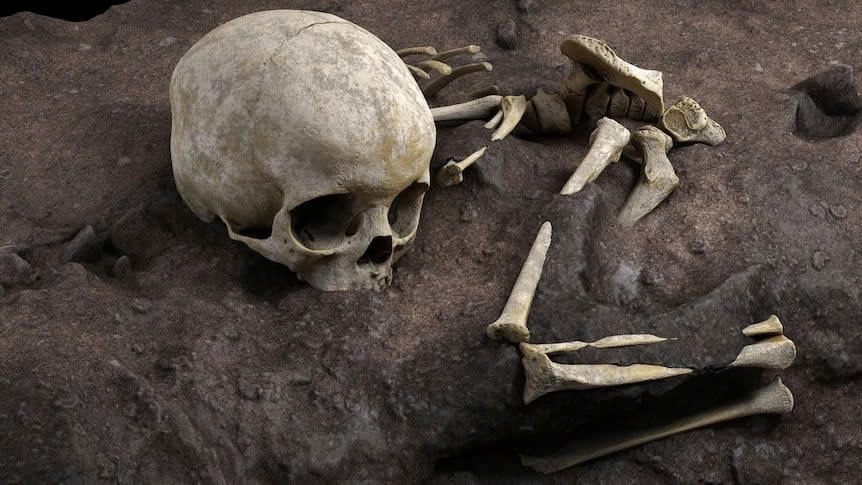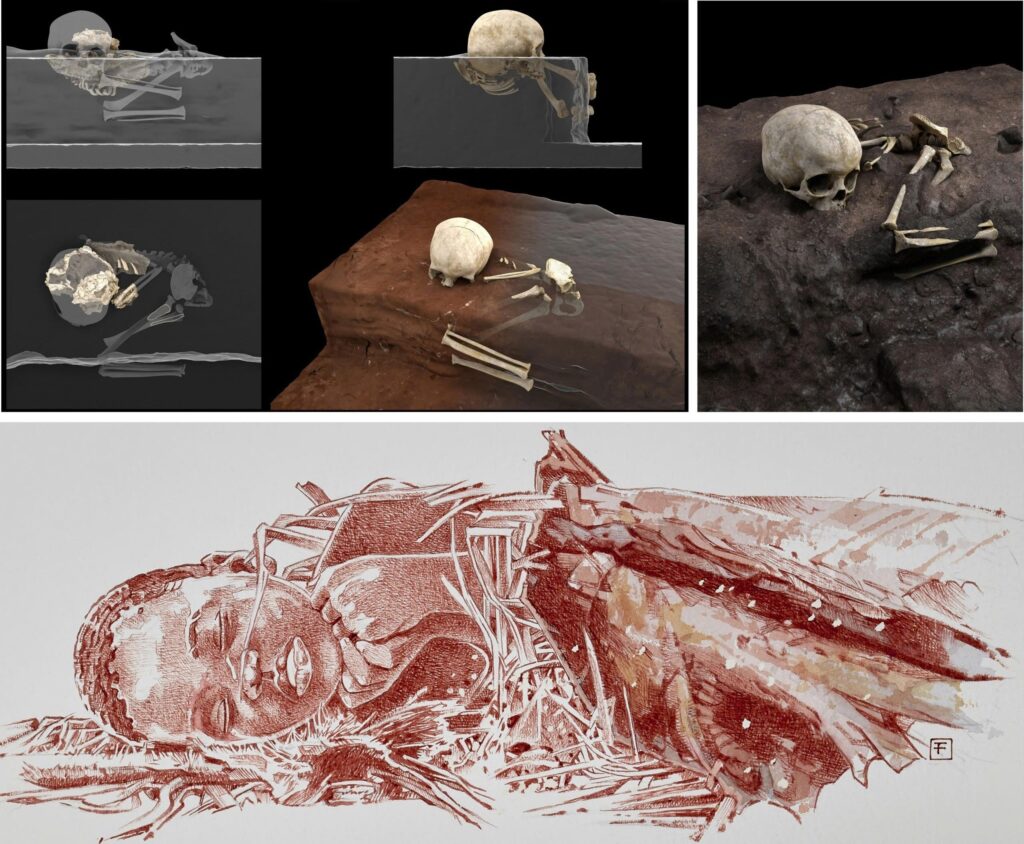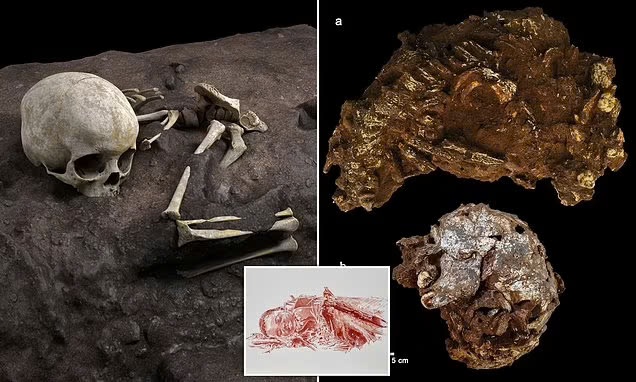78,000-Year-Old Remains Found in Kenyan Cave
In a remarkable archaeological breakthrough, scientists have discovered the oldest known human burial in Africa, illuminating the funeral customs of our ancient ancestors. This finding, detailed in a study published in the journal Nature, offers a rare insight into the emotional and cultural lives of early humans.

The Discovery of Mtoto
A group of archaeologists from Germany’s Max Planck Institute for the Science of Human History and the National Museums of Kenya made this significant discovery in the Panga ya Saidi cave complex located in southeastern Kenya. The remains, belonging to a child from the Middle Stone Age estimated to be between 2.5 and 3 years old, have been named “Mtoto,” which means “child” in Swahili.

Revealing Ancient Rituals
The burial site of Mtoto shows a level of care and ceremony that has not been observed in such ancient remains before. The child was interred in a carefully dug pit, lying on their side with knees drawn up to the chest, indicating a thoughtful burial process. Notably, evidence suggests that the child’s head may have rested on a cushion-like support, implying the possibility of a mourning ritual.
A Glimpse into Early Human Behavior

Nicole Boivin, director of the Max Planck Institute for the Science of Human History, highlights the importance of this discovery: “The intentional burial of the dead is so far restricted to Homo sapiens and Neanderthals, distinguishing us from all other ancient hominins and animals. Investigating mortuary and burial customs provides insights into the evolution of our species, our thoughts, emotions, cosmological beliefs, and what it means to be human.”
From Discovery to Analysis
The path from initial discovery to a comprehensive understanding of the site’s significance has been lengthy. Portions of the bones were initially discovered in 2013, but it wasn’t until 2017 that the burial pit was revealed. Given the fragile nature of the remains, they were carefully retrieved and sent to the National Research Center on Human Evolution in Burgos, Spain, for thorough analysis.

A Wealth of Historical Insights
In addition to the burial itself, the Panga ya Saidi cave complex has unearthed a trove of historical artifacts, including seashell beads and thousands of tools. These findings illustrate the technological shift from the Middle to Later Stone Ages, enhancing our understanding of human development during this pivotal era.
This extraordinary discovery not only extends the timeline of intentional human burials in Africa but also provides invaluable insights into the social and cultural practices of our ancestors. As researchers delve deeper into the study of Mtoto and its archaeological context, we may uncover even greater understanding of the origins of human ritual and emotion.

